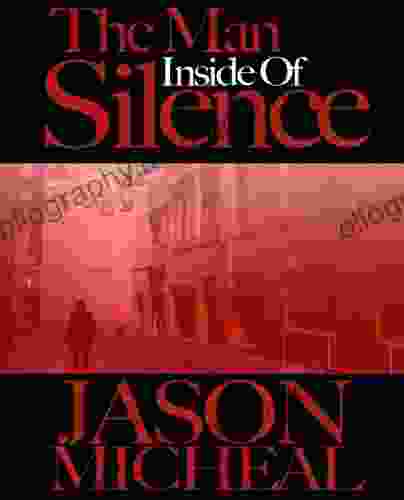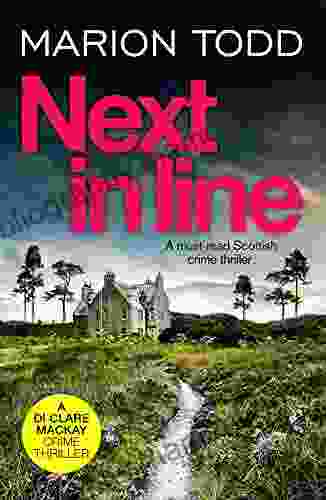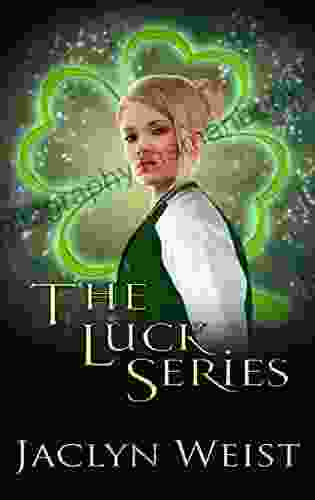The Man Inside of Silence: A Journey into the World of Deafness

Deafness, an enigmatic condition that has perplexed humanity for centuries, plunges individuals into a world devoid of sound. Yet, within this silent realm, a vibrant tapestry of human experience unfolds, marked by unique perspectives and resilient spirits. This article embarks on a profound journey into the world of deafness, unraveling its complexities and shedding light on the extraordinary individuals who navigate it.
The annals of history are etched with accounts of deafness, dating back to ancient civilizations. From the enigmatic hieroglyphics of ancient Egypt to the writings of philosophers like Aristotle and Plato, deafness has left an enduring mark on human understanding. Throughout time, societal attitudes towards deafness have fluctuated, ranging from isolation and stigma to acceptance and celebration.
In the 18th century, the Abbé de l'Épée, a French priest, revolutionized the education of deaf individuals with the establishment of the first school for the deaf. His pioneering methods, which emphasized sign language as a legitimate form of communication, laid the foundation for the modern field of deaf education.
5 out of 5
| Language | : | English |
| File size | : | 1447 KB |
| Text-to-Speech | : | Enabled |
| Screen Reader | : | Supported |
| Enhanced typesetting | : | Enabled |
| Word Wise | : | Enabled |
| Print length | : | 93 pages |
| Lending | : | Enabled |
Deafness can arise from various factors, including genetic mutations, environmental influences, and acquired conditions. Congenital deafness, present at birth, may result from genetic abnormalities or maternal infections during pregnancy. On the other hand, acquired deafness can develop later in life due to noise exposure, viral infections, or neurological disorders.
The spectrum of hearing loss varies widely, from mild impairments that affect certain frequencies to profound deafness, where sound is entirely absent. Conductive hearing loss, caused by obstructions in the outer or middle ear, can often be treated with surgery or hearing aids. Sensorineural hearing loss, resulting from damage to the inner ear or auditory nerve, is typically permanent and may require assistive devices like cochlear implants.
Deafness transcends the realm of physical impairment, giving rise to a distinct cultural identity. Deaf individuals share a common language, sign language, which allows them to communicate and connect with each other. This shared language fosters a sense of community and belonging, providing a platform for social interaction, artistic expression, and cultural preservation.
Deaf culture encompasses a rich heritage of customs, traditions, and values. Deaf individuals often identify strongly with their deafness, viewing it as an integral part of their identity rather than a disability. This positive self-perception has led to a growing movement for deaf rights and the recognition of sign language as an official language.
Sign language, the primary mode of communication for many deaf individuals, is a visually expressive language that utilizes hand gestures, facial expressions, and body movements. Far from being a mere substitute for speech, sign language possesses its own unique grammar, syntax, and vocabulary, allowing for complex and nuanced conversations.
Sign language transcends the boundaries of spoken languages, facilitating communication between deaf individuals from diverse linguistic backgrounds. It empowers deaf individuals to access education, employment, and social opportunities, breaking down communication barriers and promoting inclusivity.
Technological advancements have played a pivotal role in empowering deaf individuals and bridging the gap between the hearing and deaf worlds. Cochlear implants, surgically implanted devices that bypass damaged portions of the inner ear, provide a remarkable restoration of hearing for some individuals.
Additionally, assistive technologies such as hearing aids, captioning services, and vibrating alarm clocks have become invaluable tools for deaf individuals, enabling them to participate more fully in daily life. These innovations continue to push the boundaries of accessibility, creating a more inclusive society for all.
Beyond the medical and sociological aspects of deafness lies the profoundly human experience of those who live in silence. Personal stories offer invaluable insights into the multifaceted challenges and triumphs faced by deaf individuals.
Helen Keller: The Unconquerable SpiritHelen Keller, born deaf and blind, defied all odds to become a renowned author, lecturer, and advocate for the disabled. Her indomitable spirit and the dedication of her teacher, Anne Sullivan, remain a testament to the power of human resilience.
Beethoven: A Deafening SymphonyLudwig van Beethoven, one of the greatest composers in history, lost his hearing in his later years. Despite this profound loss, he continued to compose masterpieces that transcended the boundaries of silence.
Marlee Matlin: Breaking Barriers on ScreenMarlee Matlin, an award-winning actress, broke ground as the first deaf performer to win an Academy Award. Her success has paved the way for greater representation of deaf individuals in the entertainment industry.
To fully embrace the world of deafness, it is essential to promote awareness and inclusion within society. This includes:
Education and Sensitization: Educating hearing individuals about deafness, its causes, and the diverse experiences of deaf people is crucial for fostering understanding and empathy.
Accessibility and Accommodations: Ensuring that public spaces, workplaces, and educational institutions are accessible for deaf individuals is essential for their full participation in society. This includes providing sign language interpreters, captioning services, and other assistive technologies.
Respect for Deaf Culture: Recognizing and respecting the unique cultural identity of the deaf community is vital for fostering a sense of belonging and acceptance.
The world of deafness is a captivating tapestry of human experience, where silence becomes a catalyst for resilience, innovation, and cultural identity. By embracing a deeper understanding of deafness, its challenges, and its triumphs, we can create a more inclusive society that celebrates the diversity of human existence.
As we navigate the silent realm, let us not merely listen with our ears but also with our hearts and minds. For within the symphony of human experience, every voice has a place, and every story deserves to be heard.
5 out of 5
| Language | : | English |
| File size | : | 1447 KB |
| Text-to-Speech | : | Enabled |
| Screen Reader | : | Supported |
| Enhanced typesetting | : | Enabled |
| Word Wise | : | Enabled |
| Print length | : | 93 pages |
| Lending | : | Enabled |
Do you want to contribute by writing guest posts on this blog?
Please contact us and send us a resume of previous articles that you have written.
 Top Book
Top Book Novel
Novel Fiction
Fiction Nonfiction
Nonfiction Literature
Literature Paperback
Paperback Hardcover
Hardcover E-book
E-book Audiobook
Audiobook Bestseller
Bestseller Classic
Classic Mystery
Mystery Thriller
Thriller Romance
Romance Fantasy
Fantasy Science Fiction
Science Fiction Biography
Biography Memoir
Memoir Autobiography
Autobiography Poetry
Poetry Drama
Drama Historical Fiction
Historical Fiction Self-help
Self-help Young Adult
Young Adult Childrens Books
Childrens Books Graphic Novel
Graphic Novel Anthology
Anthology Series
Series Encyclopedia
Encyclopedia Reference
Reference Guidebook
Guidebook Textbook
Textbook Workbook
Workbook Journal
Journal Diary
Diary Manuscript
Manuscript Folio
Folio Pulp Fiction
Pulp Fiction Short Stories
Short Stories Fairy Tales
Fairy Tales Fables
Fables Mythology
Mythology Philosophy
Philosophy Religion
Religion Spirituality
Spirituality Essays
Essays Critique
Critique Commentary
Commentary Glossary
Glossary Bibliography
Bibliography Index
Index Table of Contents
Table of Contents Preface
Preface Introduction
Introduction Foreword
Foreword Afterword
Afterword Appendices
Appendices Annotations
Annotations Footnotes
Footnotes Epilogue
Epilogue Prologue
Prologue Peter Arango
Peter Arango Claire Saffitz
Claire Saffitz Abby Jimenez
Abby Jimenez Eldridge Kalford
Eldridge Kalford Carmen Maria Machado
Carmen Maria Machado Alan Sillitoe
Alan Sillitoe Blade Pen
Blade Pen Heather Maclachlan
Heather Maclachlan Tim Flanagan
Tim Flanagan Michael Rotondo
Michael Rotondo Misha Collins
Misha Collins Antonia Cameron
Antonia Cameron Leo Schneeschuh
Leo Schneeschuh Tim Fulford
Tim Fulford Juliet Blackwell
Juliet Blackwell Dina A Amin
Dina A Amin J R Biery
J R Biery Kim Zubek
Kim Zubek Nancy Harris
Nancy Harris Demelza Carlton
Demelza Carlton
Light bulbAdvertise smarter! Our strategic ad space ensures maximum exposure. Reserve your spot today!
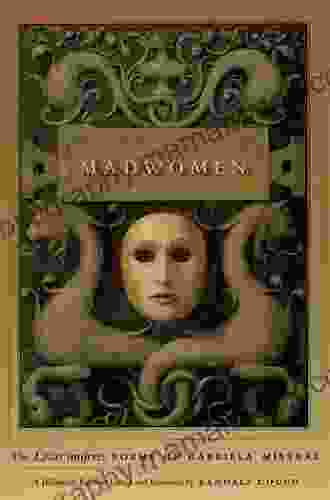
 Jeffrey HayesThe Locas Mujeres Poems of Gabriela Mistral: A Bilingual Edition - A Literary...
Jeffrey HayesThe Locas Mujeres Poems of Gabriela Mistral: A Bilingual Edition - A Literary...
 Edmund HayesThe Art of Blackwork: A Comprehensive Guide to Creating Stunning Alphabets...
Edmund HayesThe Art of Blackwork: A Comprehensive Guide to Creating Stunning Alphabets...
 Aleksandr PushkinParched Fields: A Gripping Tale of Hunger, Redemption, and the Power of Love
Aleksandr PushkinParched Fields: A Gripping Tale of Hunger, Redemption, and the Power of Love George HayesFollow ·4.8k
George HayesFollow ·4.8k Justin BellFollow ·15.1k
Justin BellFollow ·15.1k Steve CarterFollow ·15.7k
Steve CarterFollow ·15.7k John SteinbeckFollow ·2k
John SteinbeckFollow ·2k Mario Vargas LlosaFollow ·3.6k
Mario Vargas LlosaFollow ·3.6k Michael SimmonsFollow ·13.9k
Michael SimmonsFollow ·13.9k Pete BlairFollow ·3.1k
Pete BlairFollow ·3.1k John ParkerFollow ·4k
John ParkerFollow ·4k

 Patrick Rothfuss
Patrick RothfussHow to Make a Million Dollars: No Secrets
Making a million dollars...
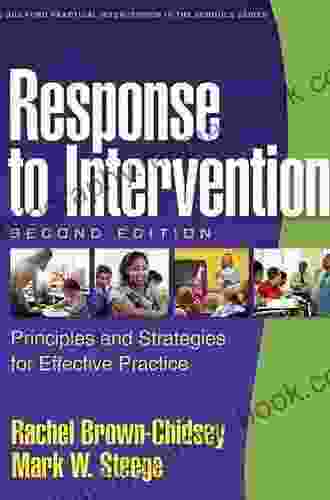
 Robert Heinlein
Robert HeinleinResponse to Intervention, Second Edition: RTI in Practice
A Comprehensive Resource for Educators and...

 Timothy Ward
Timothy WardUnravel the Gripping Assassination Thriller Bursting with...
Prepare yourself for a...
5 out of 5
| Language | : | English |
| File size | : | 1447 KB |
| Text-to-Speech | : | Enabled |
| Screen Reader | : | Supported |
| Enhanced typesetting | : | Enabled |
| Word Wise | : | Enabled |
| Print length | : | 93 pages |
| Lending | : | Enabled |


